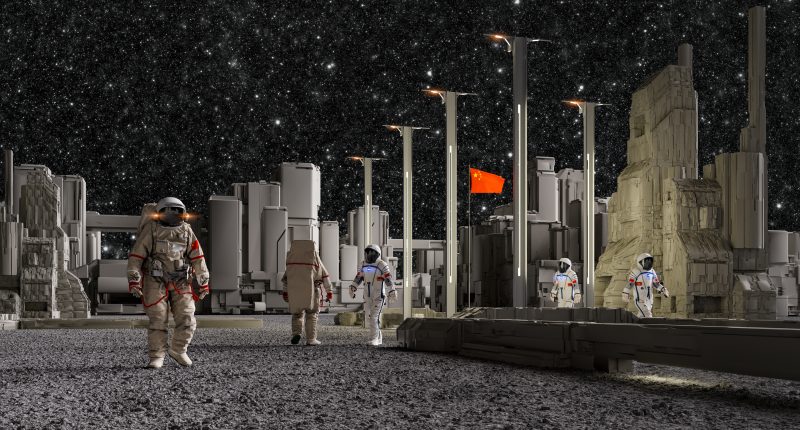RUSSIA and China are planning to put a nuclear reactor on the moon within the next decade.
As the space race hots up, Yuri Borisov, the head of Russia‘s space agency Roscosmos, said the two nations are hoping to install the unit by 2035.
“We are seriously considering a project to deliver to the moon and mount a power reactor there jointly with our Chinese partners somewhere between 2033 and 2035,” he said, according to Tass.
Built by robots, the power plant will form part of China and Russia‘s plan to build the International Lunar Research Station – a sprawling space base that is set to break ground in 2026.
The lunar base, which is bigger than Disneyland, will have a radius of 3.7miles with a command centre, a power station, a communication hub, scientific facilities, and a fleet of robots.
It will even have its own satellites for remote sensing, navigation, and communication.
Read more on space
Russia and China unveiled the plan to build the scientific station – widely seen as a rival to the US-led Artemis programme – in 2021.
China hopes to begin building the base within the next few years and have a basic station established, using lunar soil, by 2028.
Under the project, China plans to send three missions – Chang’e 6, Chang’e 7 and Chang’e 8.
The base is expected to fully operation by 2050 for lunar research – and potentially as a launch pad for crewed missions.
Most read in Science
The space collaboration signals a deepening of ties between China and Russia in the realm of space exploration.
China is also planning to install chilling all-seeing surveillance on the moon to spy on its citizens and protect the lunar base.
The Skynet security cameras are said to be equipped with AI-driven chips capable of detecting and aiming at “suspicious targets”.
Skynet is the world’s largest surveillance network – with more than 600 million cameras currently used to monitor every inch of China.
AI-driven chips in the cameras will be “capable of identifying, locating, tracking and aiming at suspicious targets independently”.
If any “abnormalities” are detected, the system will “promptly generate alarm signals and initiate appropriate response measures”.
Decision-makers claim certain areas within the station may need continuous, 360-degree surveillance.
It comes after Nasa revealed its own plans for a lunar power plant on the moon to power future missions.
The mission is known as the Fission Surface Power Project and it’s one of the biggest goals for Nasa‘s upcoming Artemis program.
This project could be crucial for supporting human settlements on the lunar surface.
And it could also enable the exploration of deeper space destinations in the future.
Nasa just wrapped up the initial phase of the project, which began in 2022.
The phase involved signing three $5million contracts with commercial partners to develop fission reactor designs.
The designs needed to include the reactor, its power conversion, heat rejection, power management, and distribution systems.
Nasa could use nuclear reactors to generate light and power in the permanently shadowed parts of the moon.
They could also use them to power through lunar nights – one lunar night is the equivalent of 14 nights on Earth.
In December last year, British firm Rolls-Royce also unveiled a mock-up for a nuclear reactor that could power an outpost on the moon.
The UK Space Agency awarded Rolls-Royce £2.9million to fund the development of the moon tech.
It’s not yet capable of producing electricity – and will take another six years to get ready for its first space trip.
The firm already makes reactors for submarines and is developing a factory-built power station for small towns.
It’s all part of huge plans to set up a permanent base for humans on the moon.
Nasa is hoping to put feet back on the Moon in 2025 more than 50 years after the last mission.
How does a nuclear reactor work?
It’s helpful to think of a nuclear reactor as a large kettle. It heats water to produce huge amounts of low-carbon electricity.
The nuclear reactor creates energy by splitting atoms of uranium – a process called fission.
The energy released is used as heat to make steam and drive a turbine – which generates electricity.
Different materials can be used to fuel a nuclear reactor – but uranium is most commonly used. Plutonium and thorium can also be used.
A 1000 megawatts facility would have about 75 tonnes of enriched uranium.
A typical reactor requires about 27 tonnes of fresh fuel each year.
Reactors also come in many different shapes and sizes.
They are very reliable at generating electricity and capable of running for 24 hours a day for months, if not years, with no interruption.












